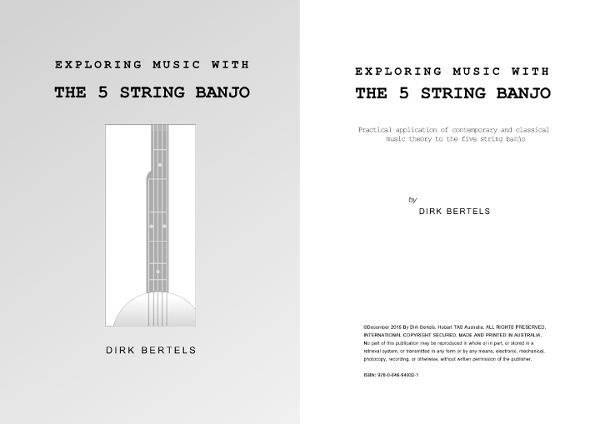Excerpt: Introduction
Many of the five string banjo's potentialities have remained
untapped so far. This is somewhat surprising given its uniqueness,
with its skin soundboard and that peculiar short string on top. Its
current use in folk music however, is not surprising. Many
instruments that are now more 'seriously' regarded had their debut in
folk music. This book is all about unlocking some of the five string
banjo's potentialities.
For a while there I was contemplating the somewhat whimsical title 'Learn
the banjo in 50 years', but that would give the wrong
impression since this is not really intended to be a teaching system
of sorts. This book is more about exploring musical ideas, some quite
novel, and relating these ideas to the current music theory
sylllabus. In addition to this, some well established music
principles are discussed from what I believe to be more reasonable
perspectives. Hopefully this will inspire readers to enrich their
current music vocabulary and maybe even venture outside the realms of
classic five string banjo styles into different musical areas.
Intended audience
There is enough variety of topics in this book to appeal to a wide
audience. For some topics a basic knowledge of music theory is
required; for others the theory gets more advanced. There is material
for the beginner as well; some fundamental concepts are touched upon
in a fresh light, which should complement the musician's current
understanding of music theory. Grasping music theory takes time, and
people will be at various levels regarding this, but it is not rocket
science after all; most of the work is done putting the theory into
practice (the 99% labour versus 1% knowledge thing).
Covered material
Musical ideas need to be based on solid theory, so the first
section is essentially a crash course in standard music theory
applied to the banjo. The aim is not to teach these systematically -
other books are better suited and more qualified to do this (Pat
Cloud's books come to mind) - but to give the reader some fresh
insights and translate these ideas to the banjo.
Things get a litle more practical in the second section, discussing
topics such as basic shapes, alterations and progressions.
The first of these, basic shapes, divides the banjo into
three main areas and presents a compendium-like overview of scales,
harmonies and licks for each of these areas. This section also
employs a rather novel way of using charts to create chord
progressions.
The third section is the most systematic of all and goes right back
to basics using tetrachords as building blocks. It then gradually
moves into more advanced areas such as minor scales, alterations and
progressions. There is a practical advantage here: the five string
banjo is ideally suited to explore tetrachords, giving the musician
the opportunity to utilise the banjo's 5th string to the fullest. [It
may seem to the reader that this section belongs to the beginning,
but there is a reason for putting it here; a fair amount of
background is needed to build the language needed in order to convey
new ideas, however basic these ideas may be].
The last section discusses more individual topics such as rhythm
and phrasing (using examples from John Hartford), African
patterns and a study on rolls (the non-edible type).
Though heavily based on theory, all practical examples are the
result of practice and experimentation, material from which readers
can construct their own exercises and derive fresh musical ideas.
Always keep in mind that the five string banjo in its current guise
is a relatively new instrument and has been in existence little more
than a hundred years. Compare this with the six hundred year old
history of the violin, which b.t.w. originated as a folk instrument
as well. This fact, together with the banjo's unique layout and
playing technique, provides fertile ground for experimentation and
inventiveness.
